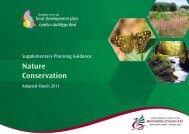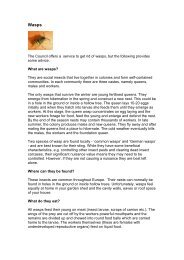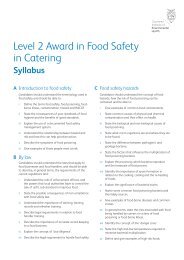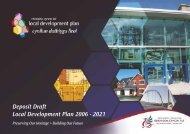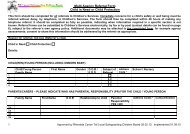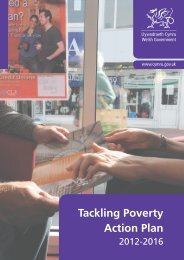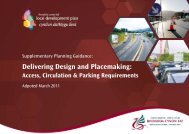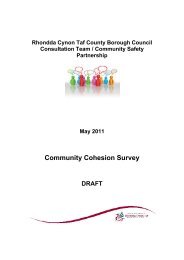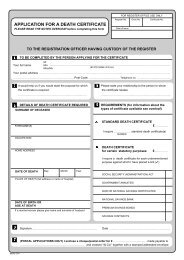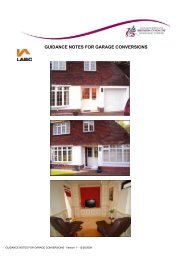Cynllun Iaith Gymraeg - Rhondda Cynon Taf
Cynllun Iaith Gymraeg - Rhondda Cynon Taf
Cynllun Iaith Gymraeg - Rhondda Cynon Taf
- No tags were found...
Create successful ePaper yourself
Turn your PDF publications into a flip-book with our unique Google optimized e-Paper software.
3.6 Other Contact with the PublicThe Council provides services for the public by using e-government systems. The Council recognises that InformationTechnology also plays a key part in services that are notprovided online.The Council will ensure that where customers are invited totransact with the council through e-access to “back office”systems e.g. e-forms, bilingual content will be provided. .The Council will consult the Welsh Language Board’sInformation Technology standards within the Council’sInformation Technology / e-Government strategy and theWelsh Language Board’s Website Development andMaintenance Guidelines when maintaining and / ordeveloping customer facing systems..The Council aims to post any permanent core servicearea content bilingually.Other electronic signs and messages, will be bilingual,as will Public Address systems, pre-recorded messagesas used for general announcements in theatres,cinemas, museums and safety announcements in lifts,vehicles, etc.4. THE COUNCIL'S PUBLIC FACE4.1 Corporate IdentityThe official name and spelling of the Council is <strong>Rhondda</strong><strong>Cynon</strong> <strong>Taf</strong>. The word <strong>Taf</strong> is as in the original Welsh version ofthe river and not the anglicised version <strong>Taf</strong>f. The decision touse only the original Welsh version was made by cabinetmembers in January 2002.Guidance has been issued to staff and others involved in theproduction of the Council's bilingual public image, to ensurethe Scheme is adhered to. Staff involved inproduction of print and materials using externalproviders must ensure that they are fullyinformed of the requirements of the Council’sCorporate Identity Manual and Welsh LanguageScheme.4.2 SignsOff the highway, all new internal and external signs givinginformation in areas to which the public have access withinthe Council's property will be bilingual, with the Englishversion appearing above the Welsh, unless there is a singleversion in existence.For highway and road traffic signs, road markings and public carparks, new and replacement bilingual signs will be provided in thecourse of maintenance and improvement works, with the Englishversion appearing above the Welsh. This also includes anynecessary temporary road safety signage.As new and replacement boundary and place name signs areprovided they will be in a bilingual form, unless a singlelanguage version is appropriate.The Council’s policy for naming places, includingnew streets, developments and estates is as follows:• The Council believes that its image and public face shouldreflect the fact that it uses two languages in the community.• The Council has a statutory duty to maintain accurate andupdated lists of the names of towns, villages, communitiesand wards as well as new developments. In each case, theCouncil will, ensure that its lists are of a high standard andwill, in collaboration with the Welsh Language Board conductan audit of the lists that it maintains andwill standardise them where necessary.• The Council will issue clear guidance onthe use of standardised names whendealing with developers, town andcommunity councils and the Post Officeand any other interested parties.• While the Council has the right todecide on the names of new streets,local opinion will also beconsidered. The policy in relationto new names will be to adoptthe name that is consistent withthe heritage and history of thearea.• When replacing signs orerecting new signs includingstreet signs and newdevelopment signs, theCouncil will consult withthe town and communitycouncil, where such acouncil exists, in order tocome to an agreementon the name.





